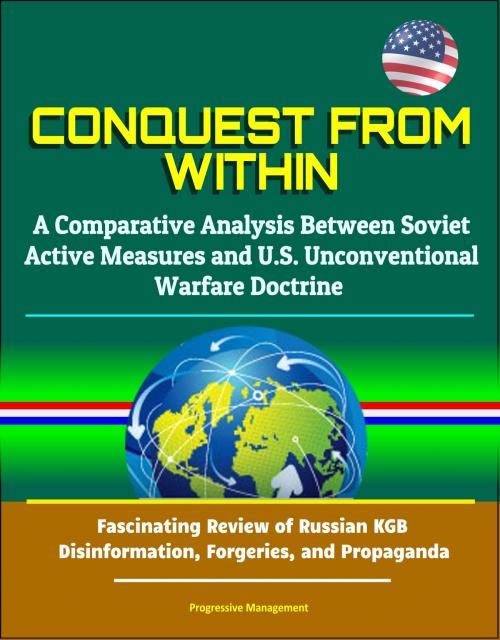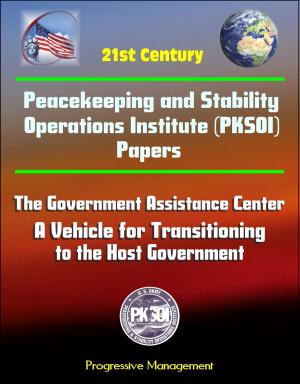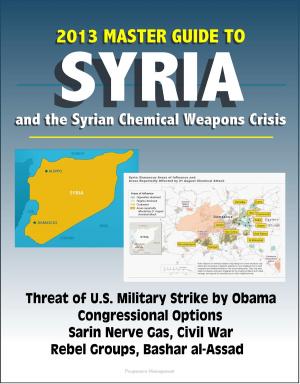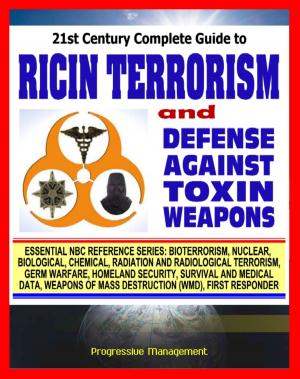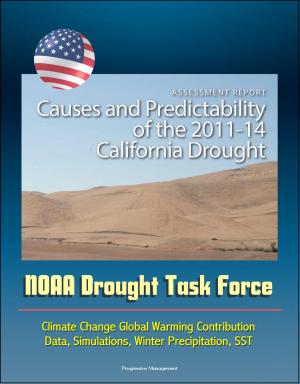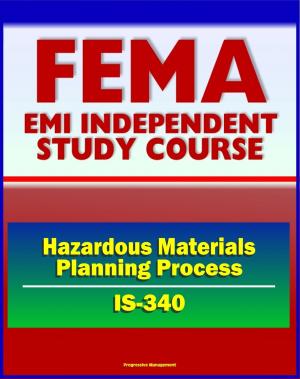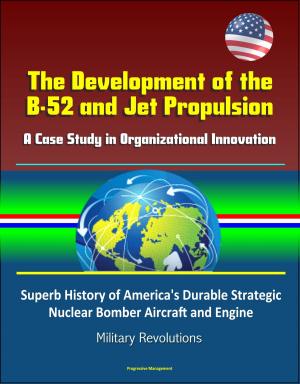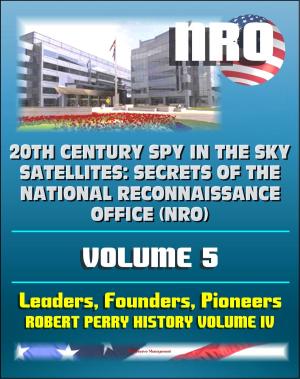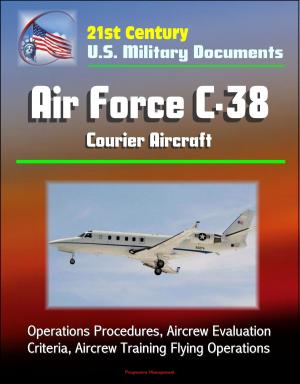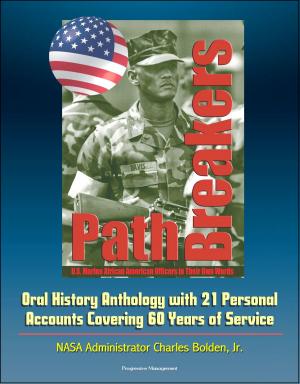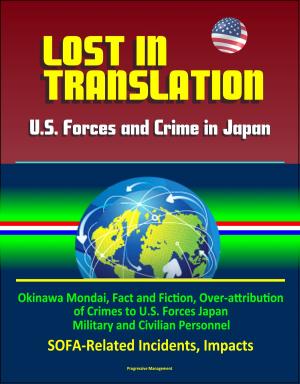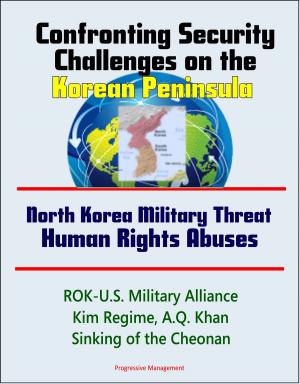Conquest from Within: A Comparative Analysis Between Soviet Active Measures and U.S. Unconventional Warfare Doctrine - Fascinating Review of Russian KGB Disinformation, Forgeries, and Propaganda
Nonfiction, History, Asian, Russia, Military, United States| Author: | Progressive Management | ISBN: | 9780463779699 |
| Publisher: | Progressive Management | Publication: | May 5, 2018 |
| Imprint: | Smashwords Edition | Language: | English |
| Author: | Progressive Management |
| ISBN: | 9780463779699 |
| Publisher: | Progressive Management |
| Publication: | May 5, 2018 |
| Imprint: | Smashwords Edition |
| Language: | English |
This excellent report has been professionally converted for accurate flowing-text e-book format reproduction.
Contemporary national security challenges demand the continued development of options to best understand and address irregular threats. Unconventional Warfare (UW), traditionally a Special Operations Forces core activity, has served U.S. strategic interests in a variety of operational environments. Throughout the Cold War, the Soviet active measures campaign against the U.S. paralleled the U.S. doctrinal concept of UW in many ways, and provides a non-U.S.-centric case study in understanding a highly complex, long-term campaign approach to influence and subversion. This thesis presents a comparative analysis between active measures and the current U.S. doctrinal framework of UW in order to develop a better common understanding of an irregular strategy increasingly evident in the contemporary operational environment on the part of both state and non-state adversaries. This thesis also develops and presents an amended definition for the term active measures, terminology for assessing UW-like operations from a non-U.S.-centric perspective, and provides recommendations for further research and consideration.
CONTENTS * CHAPTER 1 INTRODUCTION * Purpose of Study * Research Question * Assumptions * Limitations * Scope and Delimitations * Significance of this Study * CHAPTER 2 LITERATURE REVIEW * Methodology * Subject Matter Experts * Professional Researchers * Participants * Official Records * U.S. Doctrine * Gaps in the Record * Significance of Thesis in Relation to Existing Literature * CHAPTER 3 RESEARCH METHODOLOGY * The Evolution of Soviet Active Measures * Reasoning for Time Period Selected: 1959-1989 * Army UW Doctrine as a Framework for Comparative Analysis? * Defining Active Measures * Existing Definitions of Active Measures * Proposed Definition of Active Measures * Strengths and Weaknesses of Methodology * CHAPTER 4 ANALYSIS * UW Foundation * UW Requirements * Ends, Ways, and Means of UW * Ends, Ways, and Means of Soviet Active Measures * Ends * Ways * Classic Active Measures * Press Placements * Forgeries * Disinformation * Non-ruling Communist Parties * International and Local Front Organizations * Friendship Societies * Manipulation of Mass Organizations and Non-Communist Political Parties * Clandestine Radio Stations * Military Operations * Political Influence Operations * Agents of Influence * Use of Academicians * Use of the Media * Phasing and Timing * Demoralization (15-20 years) * Destabilization (2-5 years) * Crisis (up to six weeks) * Normalization (indefinite) * Means * Use of a Third Party Sponsor * Impact and effectiveness * CHAPTER 5 CONCLUSION AND RECOMMENDATIONS * Conclusion * Recommendations for Future Research * Suggested Topics for Further Research * Author's Final Commentary * GLOSSARY
This excellent report has been professionally converted for accurate flowing-text e-book format reproduction.
Contemporary national security challenges demand the continued development of options to best understand and address irregular threats. Unconventional Warfare (UW), traditionally a Special Operations Forces core activity, has served U.S. strategic interests in a variety of operational environments. Throughout the Cold War, the Soviet active measures campaign against the U.S. paralleled the U.S. doctrinal concept of UW in many ways, and provides a non-U.S.-centric case study in understanding a highly complex, long-term campaign approach to influence and subversion. This thesis presents a comparative analysis between active measures and the current U.S. doctrinal framework of UW in order to develop a better common understanding of an irregular strategy increasingly evident in the contemporary operational environment on the part of both state and non-state adversaries. This thesis also develops and presents an amended definition for the term active measures, terminology for assessing UW-like operations from a non-U.S.-centric perspective, and provides recommendations for further research and consideration.
CONTENTS * CHAPTER 1 INTRODUCTION * Purpose of Study * Research Question * Assumptions * Limitations * Scope and Delimitations * Significance of this Study * CHAPTER 2 LITERATURE REVIEW * Methodology * Subject Matter Experts * Professional Researchers * Participants * Official Records * U.S. Doctrine * Gaps in the Record * Significance of Thesis in Relation to Existing Literature * CHAPTER 3 RESEARCH METHODOLOGY * The Evolution of Soviet Active Measures * Reasoning for Time Period Selected: 1959-1989 * Army UW Doctrine as a Framework for Comparative Analysis? * Defining Active Measures * Existing Definitions of Active Measures * Proposed Definition of Active Measures * Strengths and Weaknesses of Methodology * CHAPTER 4 ANALYSIS * UW Foundation * UW Requirements * Ends, Ways, and Means of UW * Ends, Ways, and Means of Soviet Active Measures * Ends * Ways * Classic Active Measures * Press Placements * Forgeries * Disinformation * Non-ruling Communist Parties * International and Local Front Organizations * Friendship Societies * Manipulation of Mass Organizations and Non-Communist Political Parties * Clandestine Radio Stations * Military Operations * Political Influence Operations * Agents of Influence * Use of Academicians * Use of the Media * Phasing and Timing * Demoralization (15-20 years) * Destabilization (2-5 years) * Crisis (up to six weeks) * Normalization (indefinite) * Means * Use of a Third Party Sponsor * Impact and effectiveness * CHAPTER 5 CONCLUSION AND RECOMMENDATIONS * Conclusion * Recommendations for Future Research * Suggested Topics for Further Research * Author's Final Commentary * GLOSSARY
